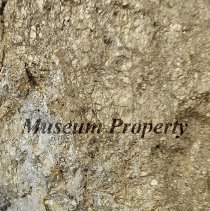Search Term Record
Metadata
Search Term |
Rock |
Number of Object records |
31 |
Number of Photo records |
1 |
Number of Archive records |
0 |
Number of Library records |
0 |
Related Records
-
Agate Geodes - Quartz
Agate geodes are geological secondary structures which occur in certain sedimentary and volcanic rocks. They are themselves of sedimentary origin and naturally made by chemical precipitation. Geodes are hollow, vaguely spheroid to oblate masses of mineral matter. It may include crystals. They are excellent for grounding, working on the emotional, physical and intellectual levels and aid in centering and stabilizing physical energy.
Record Type: Object
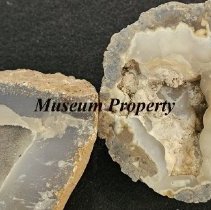
-
Amethysts - Quartz
Amethysts forms in long, prismatic crystals in geodes or hollow rocks. These geodes form when there are cavities in volcanic rock. As the rock cools, the mineral-saturated water, gases and volcanic material distil and crystallize. When these crystals harden, they form amethyst. Although generally more of a deeper purple, the stone can also have a reddish-purple tinge, or a very pale purple tinge that fades into a lilac. Amethyst is the most popul...
Record Type: Object
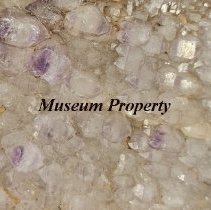
-
Amethyst with Epitaxy - Quartz
Amethyst employs two Riber molecular beam epitaxy (MBE) tools in support of its materials growth operations. This rock has (small crystals growing parellel) and was found in Jefferson County Montana.
Record Type: Object
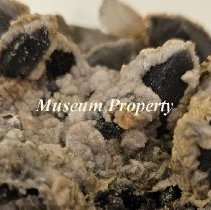
-
Arsenopyrite/Quartz - Quartz
Arsenopyrite is an iron arsenic sulfide with a chemical composition of FeAsS. It is the most abundant arsenic-bearing mineral and the primary ore of arsenic metal. It is associated with other sulfide minerals in organic-rich sedimentary rocks, metamorphic rocks, and igneous rocks and was found in Jefferson County Montana.
Record Type: Object
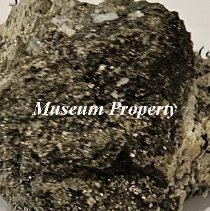
-
Axinite Epidote - Limestone
Epidote is a common mineral found in low to moderately regionally metamorphosed rocks. Epidote also occurs in contact metamorph limestone, especially near ore deposits. In granitic rocks Epidote is found in small fissures. Axinite is a brown to violet-brown, or reddish-brown bladed group of minerals composed of calcium aluminium boro-silicate, (Ca,Fe,Mn) 3Al 2BO 3Si 4O 12OH. These 4 rocks were found in Jefferson County Montana.
Record Type: Object
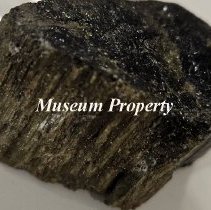
-
Chalcopyrite - Copper
Chalcopyrite, the most common copper mineral, a copper and iron sulfide, and a very important copper ore. It typically occurs in ore veins deposited at medium and high temperatures. The most obvious properties are its brassy yellow colour, metallic lustre, and high specific gravity. Although similar in appearance to gold, distinguishing these minerals is easy as gold is soft, has a yellow streak and has a much higher specific gravity. Chalcopyrit...
Record Type: Object
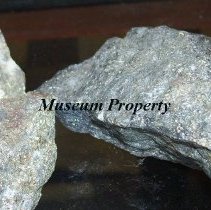
-
Copper Ore - Copper
Copper ore is typically found in the Earth's crust in the form of copper minerals, such as chalcopyrite, bornite, malachite, and chalcocite, among others. This copper ore was found on the Hallie Ferguson Mine on Cataract Creek in Jefferson County Montana. The copper ore was donated by Don Balser of Clancy Montana.
Record Type: Object
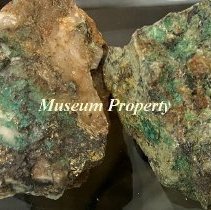
-
Fluorite (Florspar) CaF2 - Fluorite
Calcium Fluoride (CaF2), is also known as fluorite or fluorospar. It is a naturally occurring mineral that is transparent to translucent with colour varying widely from intense purple, to blue green, to yellow, through to reddish oranges, pinks, whites and browns. luoride (CaF2) is used in aluminium-metallurgy, brake lining, glass manufacturing, enamel and glazing frits production, and the production of welding agents and was found in Jefferson C...
Record Type: Object
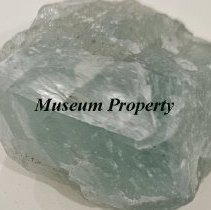
-
Garnets - Garnet
Most garnet forms when a sedimentary rock with high aluminium content, such as shale, is metamorphosed (subjected to heat and pressure). The high heat and pressure breaks the chemical bonds in the rocks and cause minerals to recrystallis. These garnets were donated by Don Balser from Jefferson County Montana. Garnets are used for abrasive blasting granules, abrasive grits and powders, filtration granules, waterjet cutting granules and gemstones s...
Record Type: Object
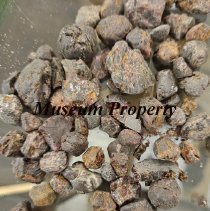
-
Green Tourmaline - Quartz
Green Tourmaline, also known as Verdelite, is a lithium rich crystalline boron silicate mineral and member of the Tourmaline family. Green Tourmaline moves healing energy throughout the body, bringing a sense of vitality and overall healthiness. It is used to encourage healthy sleep patterns, calm the nervous system and fight Chronic Fatigue Syndrome. This rock was found in Jefferson County Montana.
Record Type: Object
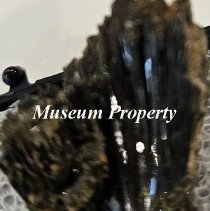
-
Japan Law Twin - Quartz
The Japan Law is the only common twinning law of quartz where the two twin crystals are visible as individuals. In a Japan Law twin the c-axis of two crystals meet at an angle of 84°33', with two of the m prism faces of both crystals being parallel.This rock was found at the PC Mine in Jefferson County Montana.
Record Type: Object
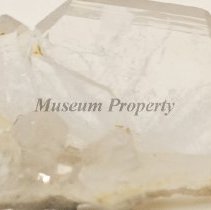
-
Lead, Copper, Galena, Pyrite, Silver - Pyrite
Galena is a lead sulfide mineral. It is the world's most important ore of lead and a significant ore of silver. Pyrite is used to create iron sulfate that is used to make nutritional supplements, ink, lawn conditioner, water treatment and flocculation, moss killer, and many other chemical processes. Lead is widely used for car batteries, pigments, ammunition, cable sheathing, weights for lifting, weight belts for diving, lead crystal glass, radia...
Record Type: Object
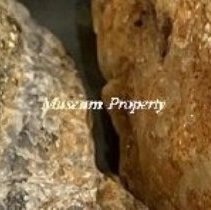
-
Microcline - Granite
Microcline (KAlSi3O8) is an important igneous rock-forming tectosilicate mineral. It is a potassium-rich alkali feldspar. Microcline typically contains minor amounts of sodium. It is common in granite and pegmatites. This rock was found at homestake Pass in Silver Bow County Montana.
Record Type: Object
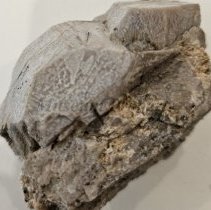
-
Moss Agate - Quartz
Moss agate is a variety of chalcedony, a mineral that belongs to the quartz family. It is formed through silica precipitation, in which silica-rich fluids fill voids and cracks in rocks and solidify into a mineral. Moss Agate speeds up recovery from illness. It is anti-inflammatory, cleanses the circulatory and elimination systems, and boosts the immune system. The moss agate was found in Jefferson County Montana.
Record Type: Object
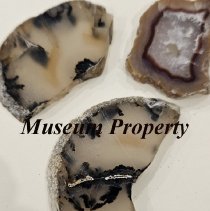
-
Peacock Ore (Borrite) - Copper
Bornite, also known as peacock ore, is a sulfide mineral with chemical composition Cu5FeS4 that crystallizes in the orthorhombic system. Bornite has a brown to copper-red color on fresh surfaces that tarnishes to various iridescent shades of blue to purple in places. Its striking iridescence gives it the nickname peacock copper or peacock ore. This rock was found in Jefferson County Montana.
Record Type: Object
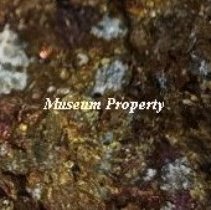
-
Petrified Leaf in Shale - Slate
Shale is a soft, brittle, fine-grained, and easily eroded sedimentary rock formed from mineral-rich silt, or mud, that was deposited in an aquatic environment, buried by other sediment, and compacted and cemented into hard rock. When exposed at the surface by erosion, shale weathers into thin layers called plates. This petrified leaf image in shale was found in Jefferson County Montana.
Record Type: Object
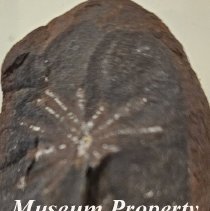
-
Petrified Leaf in Shale - Slate
Shale is a soft, brittle, fine-grained, and easily eroded sedimentary rock formed from mineral-rich silt, or mud, that was deposited in an aquatic environment, buried by other sediment, and compacted and cemented into hard rock. When exposed at the surface by erosion, shale weathers into thin layers called plates. This petrified leaf image in shale was found in Jefferson County Montana.
Record Type: Object

-
Phantom Quartz - Quartz
Phantom quartz is a variety of quartz consisting of visible layers of overlapping crystal growths. The outline of the inner crystals can be seen due to some variation in composition or mineral inclusion making the boundary between growths visible.[1] The interior crystal layers are known as phantoms. Phantoms can be found in many varieties of quartz. This phantom quartz was found at the PC Mine in Jefferson County Montana.
Record Type: Object
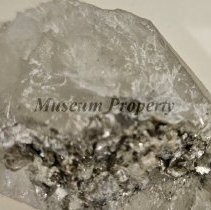
-
Point of Rocks On Elkhorn Road - Photograph
Black and white photograph of Point of Rocks on Elkhorn Road; wagon and horses with three men.
Record Type: Photo
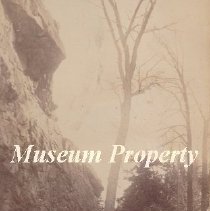
-
Pyrite - Pyrite
Pyrite, also called iron pyrite or fool's gold, a naturally occurring iron disulfide mineral. The name comes from the Greek word pyr, "fire," because pyrite emits sparks when struck by metal. Pyrite is called fool's gold; to the novice its colour is deceptively similar to that of a gold nugget. Pyrite is used for production of sulphur dioxide for the paper industry. Production of sulphuric acid for the chemistry industry and the fertilized indust...
Record Type: Object
